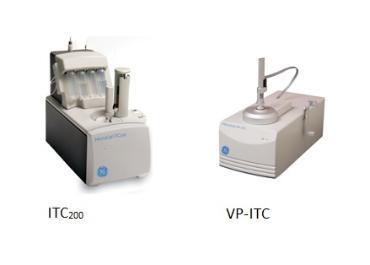Does my protein interact with another protein or ligand?
Isothermal Titration Calorimetry (ITC)
The First Law of Thermodynamics states that Energy is conserved in an isolated system and cannot be created or destroyed. It is therefore possible to directly measure heat generated or consumed during chemical reactions. Isothermal Microcalorimetry is a technique that measures changes in heat directly in solutions and allows the determination of thermodynamic parameters of interactions. Microcalorimeters are capable of measuring very small amounts of heats which allow:
- confirmation of binding interactions
- determination of binding characteristics, e.g. affinity of binding, stoichiometry of binding, etc.
ITC is easy to use and does not require labelling or immobilisation strategies to probe interactions.
There are two instruments available:

MicroScale Thermophoresis (MST) is a new powerful technology that measures the strength of interactions by detecting variations in fluorescence signal as a result of an Infra red-laser induced temperature change within glass capillaries filled with biomolecules. The range of the variation in the fluorescence signal correlates with the binding of a ligand to the fluorescent target.
ITC Sample Criteria
Typical sample requirements are; 400ul of sample for the protein at concentration of approx. 20uM and 10-50 times higher concentration of the ligand, approx. 150ul at 200uM.
MST Sample Criteria
Ideally 100ul of 200uM protein and a working concentration range of labelled partner at 10-50nM
Application range of Kd is between 1nM – 500mM
We have two labelling kits each takes approx 30 mins to label the protein, which can then be stored -20 degrees in small aliquots for up to 25 experiments.
Monolith NT Protein Labelling Kit RED-label can label small amounts (2-20uM) of purified protein. It contains NHS- ester chemistry that reacts with primary amines of proteins to form highly stable dye-protein conjugates. Primary amine groups found on basic amino acid residues. Dye shows fluorescence and emission at approx. 650 and 670nm.
Monolith His-Tag Labelling Kit RED- is a site specific, can label purification free small amounts of His tagged proteins . The dye binds to His tags with six histidines or more with a Kd in the single digit nM range. Dye shows fluorescence and emission at approx. 650 and 670nm.
Contact June Southall

